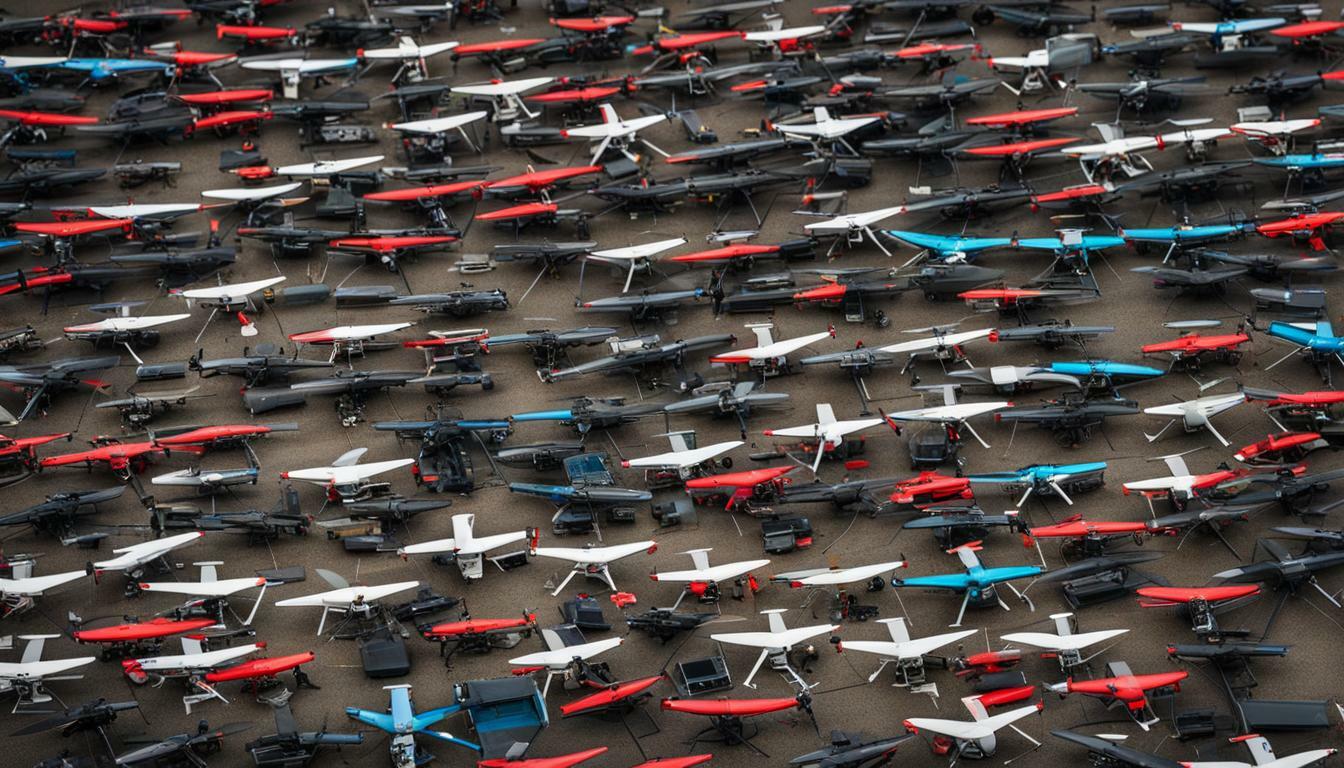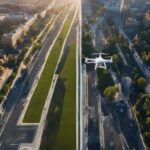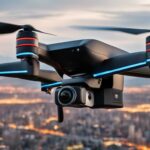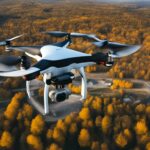Drones have become increasingly popular in recent years, but they also come with their fair share of challenges and concerns. As drone usage continues to grow, it is essential to understand the biggest problem that these unmanned aerial vehicles are facing today. From safety issues to regulatory hurdles, drone-related problems are impacting their widespread acceptance and integration into various industries.
Key Takeaways: What is the biggest problem with drones
- Drone usage has increased significantly, bringing about various challenges and concerns.
- Safety issues, such as accidents and interference, pose significant risks to drone operations.
- The complex regulatory landscape surrounding drones presents obstacles to their seamless integration.
- Privacy concerns and ethical considerations arise due to drones’ ability to collect personal data.
- Technical limitations, including malfunctions and battery life, affect the performance and reliability of drones.
Understanding the Safety and Security Risks
Safety and security are paramount when it comes to drone operations, as they pose potential risks and challenges that need to be addressed. As unmanned aircraft continue to soar in popularity, it is crucial to recognize the importance of mitigating these risks to ensure the safe and responsible use of drones.
One of the primary safety concerns is the occurrence of drone accidents. Whether due to operator error, equipment failure, or environmental factors, accidents can result in damage to property, injury to individuals, or even loss of life. To reduce the likelihood of accidents, drone operators must adhere to strict safety protocols and guidelines, and manufacturers must continue to improve the reliability and durability of drone systems.
Another significant risk is drone interference. Unregulated drone operations can potentially disrupt airspace, leading to dangerous situations for both manned aircraft and other unmanned systems. To prevent interference, it is essential to establish clear airspace regulations and implement technologies that enable effective detection and avoidance of unauthorized drone activity.
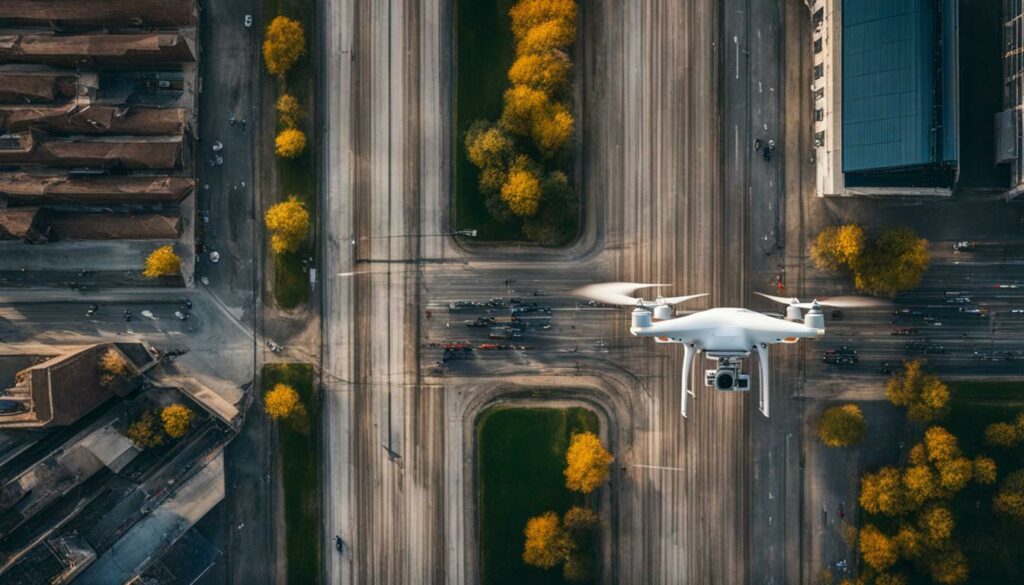
Furthermore, security concerns surrounding drones cannot be overlooked. As drones become more accessible and their capabilities advance, there is a growing fear of their misuse for malicious purposes. Threats such as unauthorized surveillance, delivery of dangerous payloads, or interference with critical infrastructure must be addressed through robust security measures, including encryption protocols and strict licensing regulations.
In summary, the safety and security risks associated with drones require careful consideration. By addressing issues such as accidents, interference, and security vulnerabilities, we can pave the way for responsible and beneficial drone usage. Through collaboration between regulators, manufacturers, and operators, we can ensure that drones continue to serve as valuable tools while minimizing the potential risks they pose.
Navigating the Complex Drone Regulations
Drone regulations can be complex and vary across different jurisdictions, making it crucial for drone operators to stay informed and compliant. Understanding and adhering to these regulations is essential to ensure the safe and responsible use of drones while avoiding penalties and legal issues.
One of the primary challenges in navigating drone regulations is the ever-changing nature of the rules. As technology advances and drone usage becomes more widespread, authorities continually update and amend the regulations to address new concerns and risks. Drone operators must stay updated on these changes to ensure compliance with the most current rules.
Privacy concerns also play a significant role in drone regulations. Drones equipped with cameras raise questions about the invasion of privacy, as they can capture images and videos without consent. Many jurisdictions have implemented specific guidelines and restrictions to protect individuals’ privacy rights. Operators must understand these rules and take appropriate measures to respect the privacy of others while using drones.
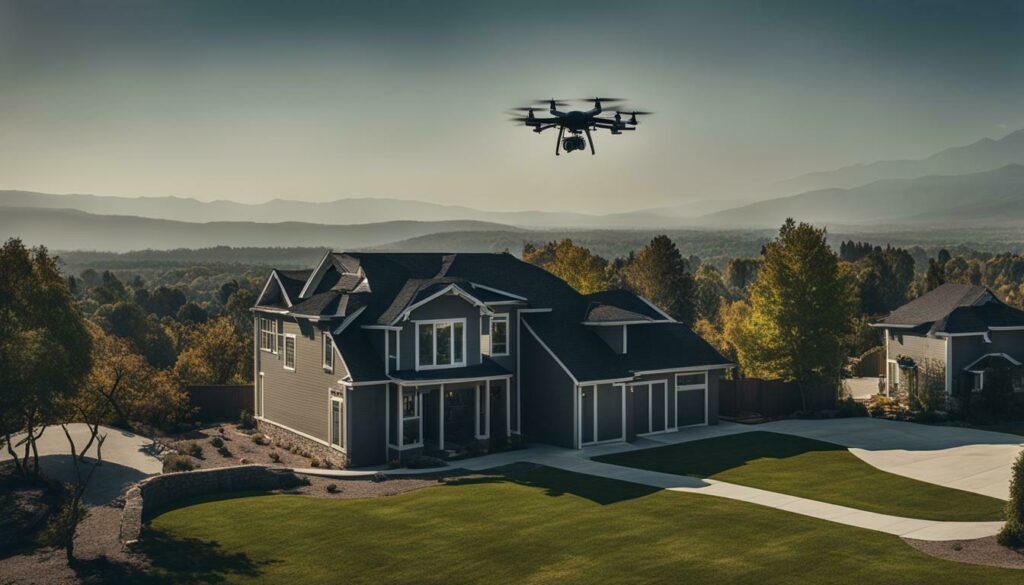
Furthermore, drone operators must be aware of any specific restrictions or limitations imposed by local authorities. Some areas, such as airports, military installations, and public events, have strict no-fly zones for drones. Violating these restrictions can have severe consequences, including fines or even criminal charges. Therefore, it is essential for operators to familiarize themselves with the local regulations and airspace restrictions before flying their drones.
Table 1: Drone Regulations in Select Jurisdictions
| Jurisdiction | Key Regulations |
|---|---|
| United States | – Must register drones with the Federal Aviation Administration (FAA) – Must follow FAA’s Part 107 rules for commercial drone operations – Restricted airspace near airports, government buildings, and public events |
| United Kingdom | – Must register drones with the Civil Aviation Authority (CAA) – Follow the Dronecode guidance for safe drone flying – No-fly zones around airports, government buildings, and sensitive locations |
| Canada | – Must obtain a drone pilot certificate from Transport Canada – Follow the Canadian Aviation Regulations for drone operations – Restricted airspace near airports, military installations, and emergency scenes |
“Drone regulations are essential to ensure the safe integration of drones into our airspace. As the technology continues to evolve, it is crucial for operators to stay informed, educate themselves about the rules, and comply with the necessary requirements. By doing so, we can harness the benefits of drone technology while minimizing the risks and concerns associated with their use.” – Drone Regulatory Agency
Privacy Concerns and Ethical Considerations
Drones have raised significant privacy concerns, leading to heated debates and controversies surrounding their use in various contexts. As drones become more prevalent in our skies, questions about the protection of personal privacy have come to the forefront. With their ability to capture high-resolution images and videos from above, drones can easily intrude upon private spaces and gather sensitive information without consent.
This issue has sparked a global conversation about the balance between innovation and privacy rights. Critics argue that the use of drones for surveillance purposes can lead to an erosion of personal privacy. There have been instances where drones have been used for unauthorized surveillance, trespassing, and invasion of privacy. These incidents have highlighted the need for robust regulations to protect individuals from potential abuse.
“The use of drones for surveillance purposes can lead to an erosion of personal privacy.”
Furthermore, the ethical considerations surrounding drone usage cannot be overlooked. The collection of personal data by drones raises questions about the boundaries of acceptable surveillance and the potential for abuse. Organizations and governments must navigate these concerns carefully to ensure the responsible and ethical use of this technology.
| Privacy Concerns and Ethical Considerations |
|---|
| Increased privacy concerns due to drones |
| Unauthorized surveillance and invasion of privacy |
| Ethical Considerations Surrounding Data Collection |
| Need for robust regulations to protect privacy |
It is crucial to strike a balance between the benefits of drone technology and the protection of privacy rights. As drones continue to advance and become more accessible, it is imperative that regulations address privacy concerns and provide guidelines for responsible use. Only through comprehensive regulations and responsible practices can we ensure the protection of privacy while harnessing the potential of this innovative technology.

Despite advancements in drone technology, there are still inherent challenges and limitations that need to be addressed for optimal performance. These technical problems can hinder the efficiency, reliability, and overall capabilities of drones, impacting their usability in various industries and applications.
One common issue faced by drone operators is the occurrence of drone malfunctions. These malfunctions can range from minor glitches to more significant failures that result in the loss of control or complete shutdown of the drone. Such malfunctions pose a significant risk not only to the drone itself but also to people and property in the surrounding area.
Another technical problem with drones is their limitations in terms of battery life and flight time. Most commercial drones have a limited battery capacity, which restricts their operational range and duration. This limitation becomes a significant drawback, especially in industries that require long-range or extended-duration flights, such as aerial surveying or delivery services.
| Technical Problems | Limitations | Drone Disadvantages |
|---|---|---|
| Drone malfunctions | Battery life and flight time | Restricted operational range |
| Software glitches | Payload capacity | Limited cargo transportation |
| GPS signal interference | Weather conditions | Flight restrictions |
| Camera quality | Regulatory limitations | Privacy concerns |
Software glitches are also a prominent technical problem with drones. These glitches can cause unexpected behavior, loss of functionality, or even system crashes. Ensuring reliable and robust software systems for drones is crucial to prevent accidents or incidents that could arise from software failures.
Furthermore, drones have limitations in terms of payload capacity. The weight of additional equipment or cargo that a drone can carry is often restricted, limiting its ability to perform certain tasks. This limitation poses challenges for industries that require heavy or specialized equipment to be transported by drones.
Other technical challenges and limitations for drones include GPS signal interference, which can affect their navigation capabilities, and weather conditions, which can impact flight stability and performance. Regulatory limitations and privacy concerns also add to the list of challenges that drone operators and manufacturers need to address to ensure responsible and legal drone usage.
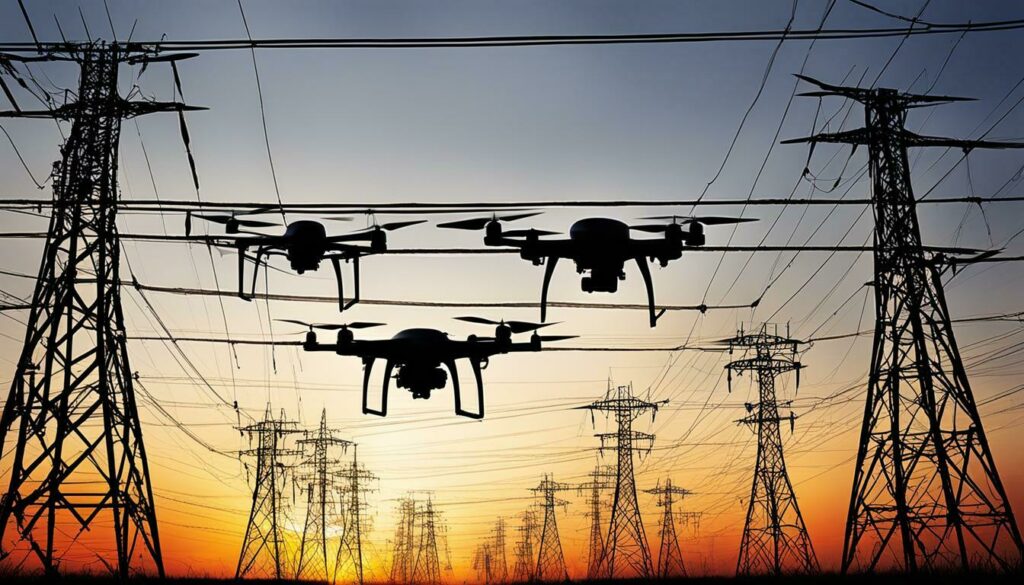
Despite advancements in drone technology, technical challenges and limitations persist. These challenges range from drone malfunctions and battery limitations to software glitches and payload capacity restrictions. GPS signal interference, weather conditions, and regulatory limitations also pose challenges for drone operators. Addressing these technical problems is vital to optimize the performance and reliability of drones in various industries and applications.
Ensuring Effective Air Traffic Control for Drones
As the number of drones in the sky continues to rise, effective air traffic control becomes crucial to avoid potential collisions and operational issues. With the increasing popularity of drones for both commercial and recreational purposes, it is important to establish robust regulations and systems to manage the growing traffic in the airspace.
The issue of drone interference with manned aircraft poses a significant risk to aviation safety. Unmanned aerial vehicles operating in the same airspace as traditional aircraft can cause disruptions, near-misses, or even accidents if not properly managed. This necessitates the implementation of air traffic control measures specifically tailored to drones.
Regulating drone operations and coordinating their movements with existing air traffic has emerged as one of the key challenges in the industry. Ensuring effective air traffic control for drones involves integrating them into the existing aviation infrastructure while addressing their unique operational characteristics. This includes developing protocols for communication, establishing geofencing capabilities to prevent drones from entering restricted areas and implementing systems to monitor and track their movements.
Moreover, drone regulation issues also encompass the need to balance safety with the efficient operation of drones. Striking the right balance between regulation and innovation is crucial to facilitating the growth of the drone industry while mitigating risks. It requires ongoing collaboration between regulatory bodies, industry stakeholders, and technology developers to establish comprehensive guidelines that enhance air traffic control capabilities for drones.

| Benefits of Effective Air Traffic Control for Drones |
|---|
| Enhanced safety for both manned aircraft and drones |
| Reduced risk of collisions and accidents |
| Optimized use of airspace |
| Improved integration of drones into existing aviation systems |
| Increased public acceptance and trust in drone technology |
Sources:
– Source 1: U.S. military’s strategy to counter China’s military buildup
– Source 2: Search for the Loch Ness Monster
– Source 3: The use of drones equipped with lasers to uncover traces of the Battle of the Bulge in World War II.
Overcoming Public Perception and Controversies
Drones have faced public scrutiny due to incidents, mishaps, and controversies, giving rise to challenges in changing the perception of these unmanned aerial vehicles. Negative incidents involving drones, such as unauthorized flights in restricted areas or collisions with other aircraft, have contributed to concerns about safety and privacy. These incidents often dominate headlines, shaping public opinion and leading to a general mistrust of drones.
One of the main challenges in overcoming public perception and controversies is the lack of awareness and understanding about the capabilities and potential benefits of drones. Many people associate drones with surveillance and invasion of privacy, unaware of the many positive applications, such as aerial photography, disaster response, and infrastructure inspections.
In order to change public perception, education, and outreach efforts are crucial. Government agencies, drone manufacturers, and industry associations have a responsibility to promote responsible drone usage and highlight the positive impact drones can have on various sectors. Public awareness campaigns, community engagement initiatives, and educational programs can help dispel misconceptions and demonstrate the safe and responsible use of drones.
It is also important to address the controversies surrounding drone regulations. Striking a balance between privacy and innovation is a complex task, as the use of drones raises concerns about surveillance and the collection of personal data. Developing clear and transparent regulations that protect privacy while allowing for the advancement of drone technology is essential. This requires collaboration between government bodies, industry stakeholders, and privacy advocates to ensure that regulations are effective, fair, and keep up with the rapid pace of technological advancements.
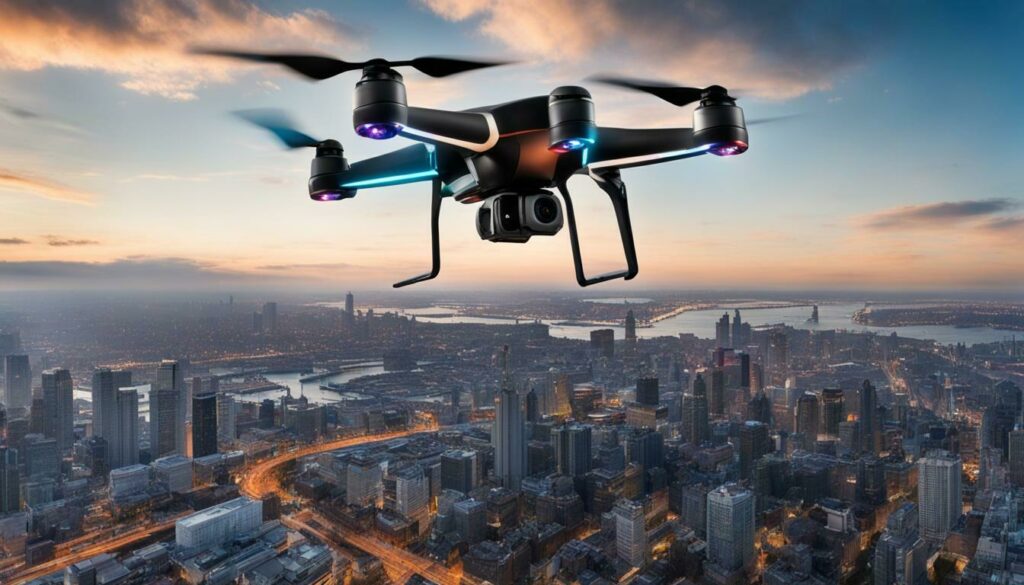
The negative perception of drones not only hampers their societal acceptance but also affects the development and implementation of drone technology. Public opposition and the fear of misuse can lead to restrictive regulations and limitations on drone usage, hindering the growth of industries that could benefit from drones. It is, therefore, essential to engage with the public, address their concerns, and showcase the positive aspects of drone technology.
Overall, overcoming public perception and controversies surrounding drones requires collaboration, transparency, and effective communication. By highlighting the benefits of drones, promoting responsible usage, and addressing privacy concerns through well-defined regulations, we can shape a positive narrative around drones and unlock their full potential for a wide range of applications.
Mitigating Drone Risks and Ensuring Responsible Use
Mitigating drone risks and promoting responsible use is essential to address the challenges and difficulties that come with the increasing popularity of drones. As more individuals and organizations embrace drone technology for various purposes, it is crucial to prioritize safety, security, and ethical considerations.
One of the main challenges faced in drone operation is the potential risks associated with their use. Drones, if not operated responsibly, can pose a threat to personal safety and property. Accidents involving drones are on the rise, ranging from collisions with obstacles to crashes that cause damage and injuries. This highlights the need for comprehensive training and education programs to ensure that drone operators are equipped with the necessary skills to navigate potential hazards.
Furthermore, responsible use of drones entails adhering to regulations and guidelines set by the authorities. These regulations aim to address privacy concerns, airspace management, and interference with other aircraft. It is crucial for drone operators to stay updated on the evolving regulations and comply with them to avoid legal complications and maintain the safety and privacy of individuals.
| Drone Risks | Drone Challenges | Drone Difficulties |
|---|---|---|
| Accidents | Regulatory compliance | Battery life limitations |
| Interference with other aircraft | Privacy concerns | Flight time constraints |
| Data breaches and privacy violations | Public perception and controversies | Technical malfunctions |
Promoting responsible use of drones also calls for addressing the ethical considerations surrounding their operation. As drones become more advanced and capable of collecting vast amounts of data, it is essential to ensure that the privacy rights of individuals are respected. This includes refraining from unauthorized surveillance and trespassing on private properties.
By prioritizing safety, complying with regulations, and addressing ethical concerns, the drone industry can navigate the challenges and difficulties it faces. Responsible use of drones not only protects individuals and property but also helps enhance the public perception of this emerging technology.
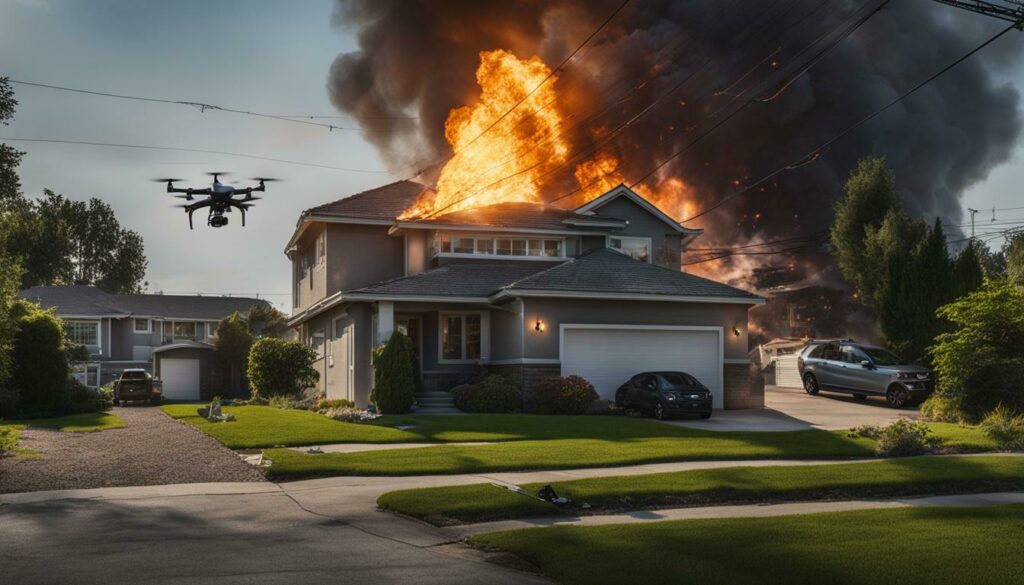
Mitigating drone risks and promoting responsible use are essential to address the challenges and difficulties that come with the increasing popularity of drones.
Key Points:
- Drone risks include accidents, interference with other aircraft, and privacy violations.
- Compliance with regulations and guidelines is crucial for responsible drone use.
- Ethical considerations involve respecting privacy rights and avoiding unauthorized surveillance.
Ensuring the responsible use of drones is crucial for mitigating risks, protecting privacy, and maintaining public trust in this evolving technology. By addressing the challenges and difficulties associated with drone operations, the industry can continue to innovate while prioritizing safety, security, and ethical considerations.
Conclusion
In conclusion, the biggest problem with drones today stems from a combination of safety issues, complex regulations, privacy concerns, technical limitations, and public controversies that need to be effectively addressed to harness the full potential of these unmanned aerial vehicles.
Drones have undoubtedly revolutionized various industries, from photography and filmmaking to delivery services and surveillance. However, their widespread usage has also brought forward a range of challenges and obstacles that must be overcome to ensure their responsible and safe integration into our society.
Safety remains a significant issue when it comes to drones. Accidents involving drones have highlighted the need for stricter regulations and better training for operators. Additionally, the risk of interference with other aircraft poses a serious threat to aviation safety, necessitating robust air traffic control measures specifically designed for drones.
Furthermore, the complex regulatory landscape surrounding drones adds another layer of difficulty for both operators and regulators. Navigating through ever-changing regulations and obtaining the necessary licenses and permits can be a daunting task, hindering the adoption and advancement of drone technology.
Privacy concerns also continue to plague the drone industry. The ability of drones to capture high-resolution images and collect personal data raises ethical questions and challenges regarding surveillance, trespassing, and the invasion of privacy. Striking the right balance between the benefits of drone technology and respecting individuals’ privacy rights remains a critical issue.
Technical limitations and drawbacks also pose hurdles for the drone industry. Challenges such as limited battery life, flight time, and susceptibility to malfunctions and technical problems can impede the reliability and effectiveness of drones.
Lastly, public perception and controversies surrounding drones further complicate the issue. Negative incidents and mishaps involving drones have shaped public opinion and created skepticism and fear. Overcoming these challenges requires concerted efforts to educate the public about the positive applications of drones and address their concerns transparently and responsibly.
Addressing the biggest problem with drones today requires a multi-faceted approach. Governments, regulatory bodies, industry stakeholders, and technology developers must collaborate to establish comprehensive safety protocols, clear and consistent regulations, and ethical guidelines. Simultaneously, public outreach and education campaigns can help bridge the gap between public perception and the potential benefits of drones. Only through these concerted efforts can we fully harness the power of drones while ensuring their safe and responsible use.
FAQ
What is the biggest problem with drones today?
The biggest problem with drones today is the safety and security risks they pose. There are concerns about drone accidents, interference with other aircraft, and potential risks involved in operating drones.
What are some safety issues related to drones?
Safety issues related to drones include the potential for accidents, interference with other aircraft, and the overall risks involved in operating drones. It is important to ensure proper training and adherence to regulations to mitigate these risks.
How are drone regulations affecting drone usage?
Drone regulations have a significant impact on drone usage. The complex regulatory landscape surrounding drones requires proper licensing and compliance with ever-changing regulations. This adds challenges to the drone industry.
What are the privacy concerns associated with drones?
Drones raise privacy concerns related to trespassing, surveillance, and the collection of personal data. There are ethical considerations surrounding the use of drones and the protection of individuals’ privacy rights.
What are some technical challenges and limitations of drones?
Drones face technical challenges such as malfunctions, limitations in battery life and flight time, and other technical problems that can impact their performance and reliability. These limitations need to be addressed for improved drone technology.
Why is effective air traffic control important for drones?
Effective air traffic control is crucial for managing the increasing number of drones in the airspace. Drone interference with manned aircraft poses significant safety risks, highlighting the need for robust regulations and proper air traffic management.
How does public perception affect drones?
Public perception of drones is influenced by negative incidents, mishaps, and controversies. Changing these perceptions and addressing public concerns is a challenge for the drone industry.
How can drone risks be mitigated and responsible use ensured?
Mitigating drone risks and ensuring responsible use can be achieved through education, training, and awareness campaigns. By addressing the challenges, difficulties, and drawbacks associated with drones, it is possible to promote safe and responsible drone usage.
Source Links
- https://www.bbc.com/news/uk-scotland-highlands-islands-66614935
- https://www.defense.gov/News/News-Stories/Article/Article/3507514/hicks-underscores-us-innovation-in-unveiling-strategy-to-counter-chinas-militar/
- https://www.livescience.com/archaeology/drones-equipped-with-lasers-uncover-secrets-of-bloody-wwii-battle


